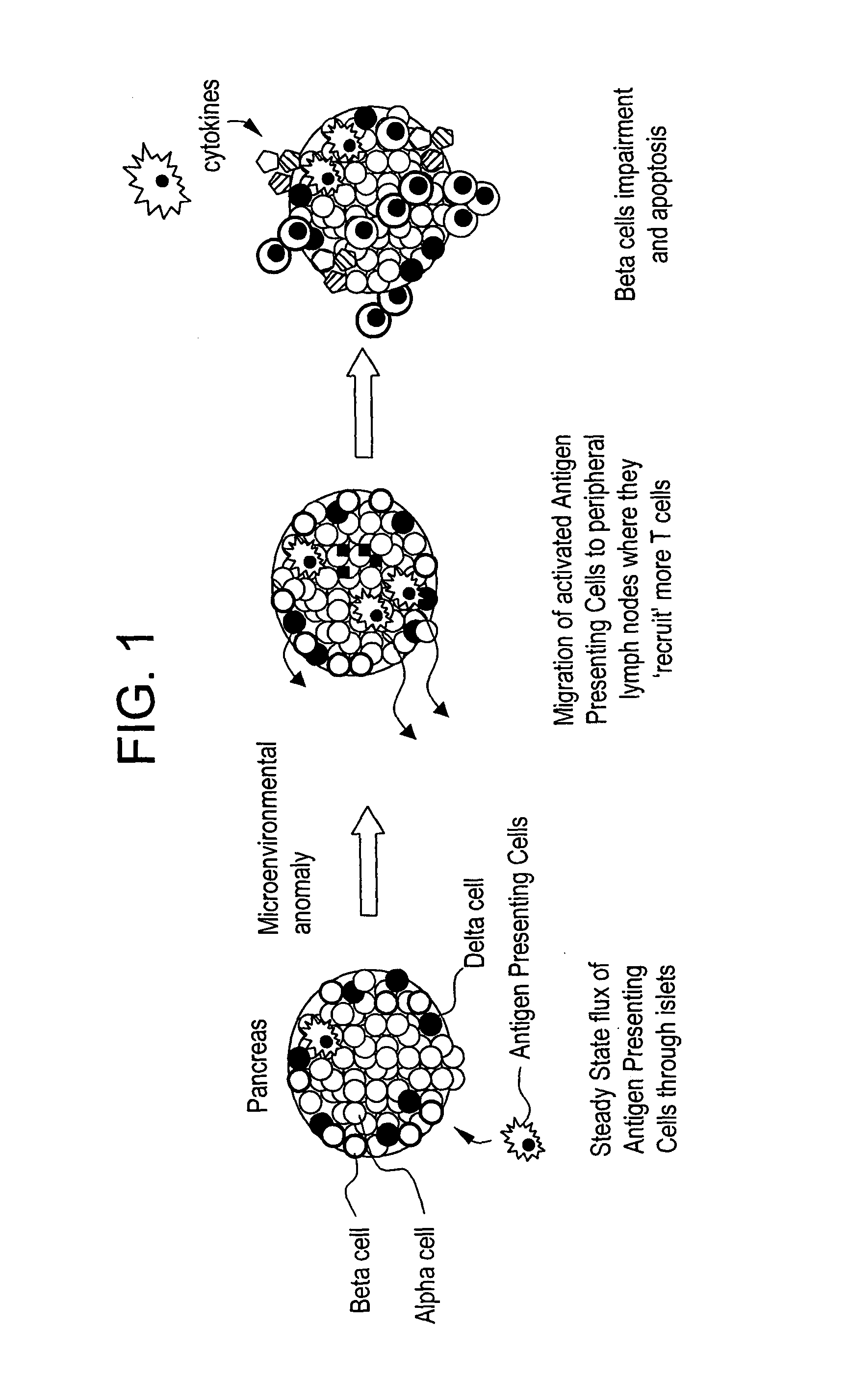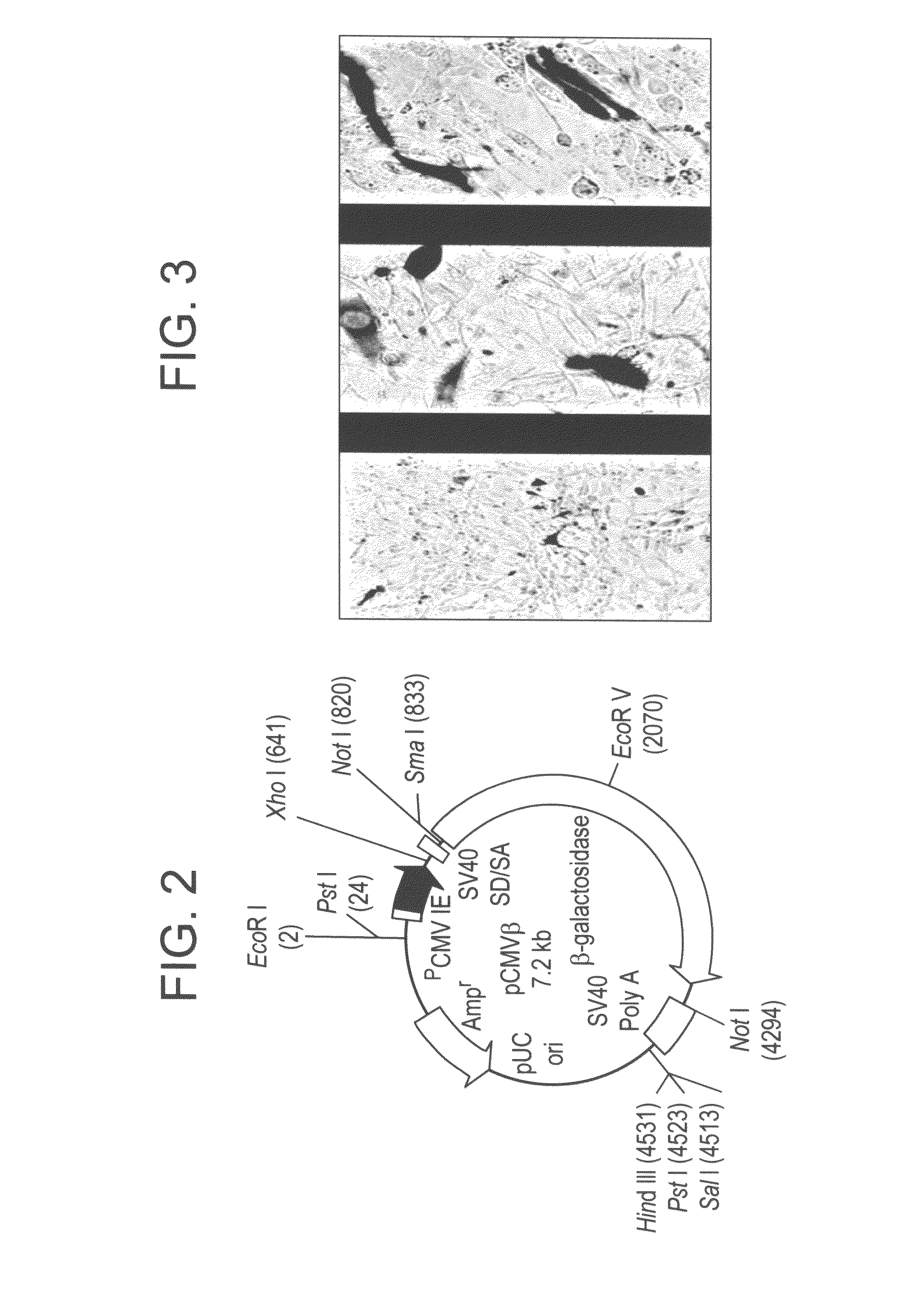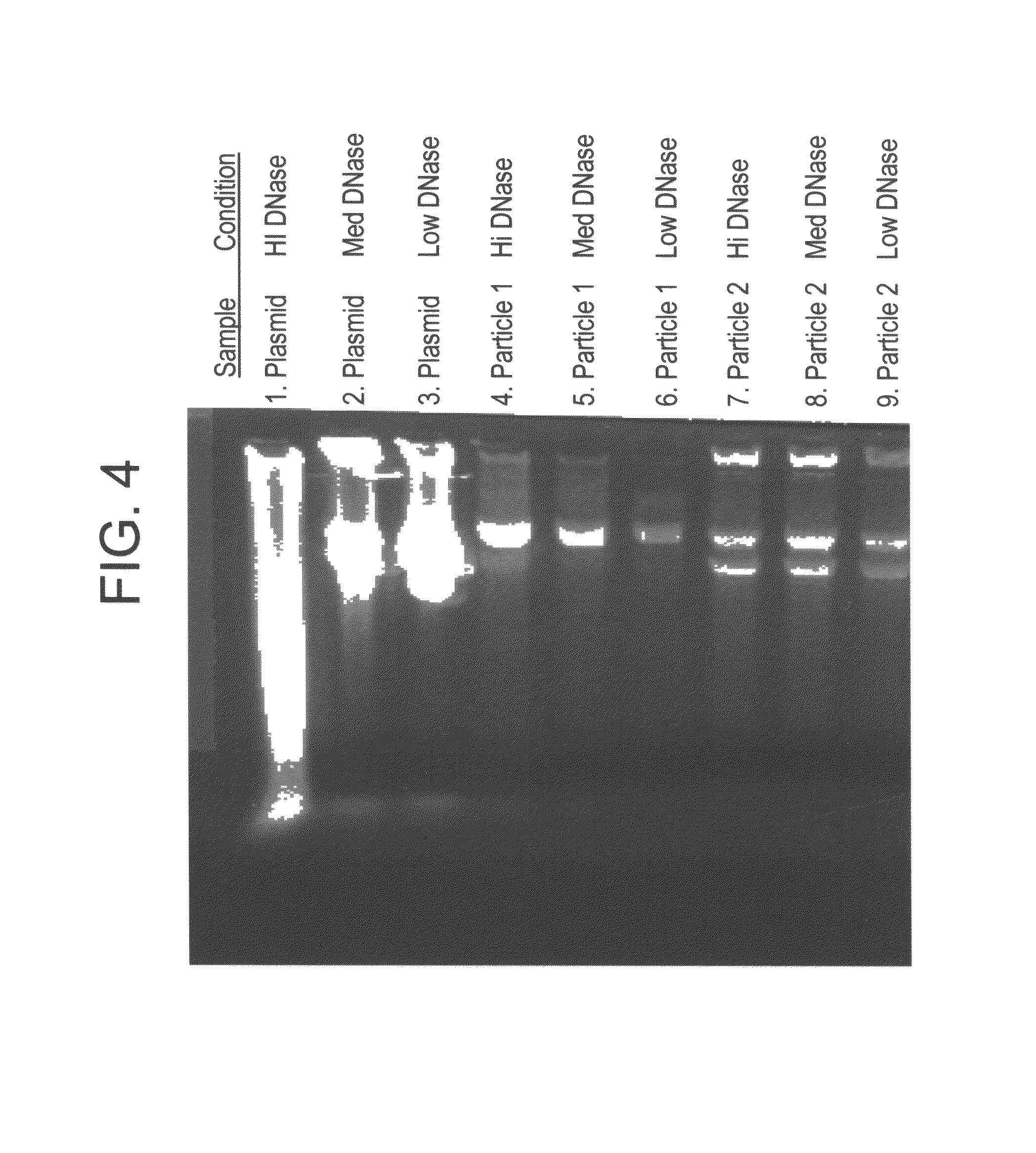Nucleic acid microspheres, production and delivery thereof
a technology of nucleic acid microspheres and nucleic acid, which is applied in the direction of granular delivery, powder delivery, dna/rna fragmentation, etc., can solve the problems of poor loading efficiency of microspheres produced using polymers, difficult and expensive production, and impede the access of delivered nucleic acids, so as to prevent premature degradation of therapeutic nucleic acids and prevent premature degradation
- Summary
- Abstract
- Description
- Claims
- Application Information
AI Technical Summary
Benefits of technology
Problems solved by technology
Method used
Image
Examples
example 1
[0063]Three AS-oligonucleotides targeted to the CD40, CD80 and CD86 primary transcripts were synthesized by the DNA synthesis facility at University of Pittsburgh (Pittsburgh, Pa.). The AS-oligonucleotides sequences, an asterisk indicating thioation, are:
[0064]
CD 40-AS:5′C*AC* AG*C C*GA* GG*C* AA*ASeq ID 1GA*C* AC*C A*T*G C*AG* GG*C* A-3′CD80-AS:5′-G*GG* AA*A G*CC* AG*G A*AT* CT*Seq ID 2A G*AG* CC*A A*TG G*A-3′CD86-AS:5′-T*GG* GT*G C*TT* CC*G T*AA*Seq ID 3GT*T C*TG* GA*A C*AC* G*T*C-3′
[0065]An aqueous solution of the oligonucleotide mixture was prepared by combining aliquots of three oligonucleotide solutions, each of which contained one type of oligonucleotide, to form a 10 mg / ml solution of the three types of oligonucleotides. Four batches of aqueous solution of oligonucleotides-mixture were prepared. 10 mg / ml poly-L-lysine-HBr in deionized water (poly-L-lysine-HBr up to 50,000 by Bachem, King of Prussia, Pa.) was prepared. Poly-L-lysine-HBr was added to the oligonucleotides solut...
example 2
[0072]AS-oligonucleotides targeted to the CD40, CD80 and CD86 primary transcripts were the AS-oligonucleotides sequences of Example 1. An aqueous solution of the oligonucleotides mixture was prepared by combining aliquots of three oligonucleotide solutions, each of which contained one type of oligonucleotide, to form a 10 mg / ml solution of the three types of oligonucleotides. Four batches of solutions of the oligonucleotides mixture were prepared. 5 mg / ml poly-L-ornithine-HBr in deionized water (poly-L-ornithine-HBr 11,900 (vis) by Sigma) solution was prepared.
[0073]Poly-L-ornithine-HBr was added to the oligonucleotides solution at varying volumetric ratios as described in Table 2. Batches were labeled 1, 2, 3, and 4. The mixtures were vortexed gently. A 25% polymer solution containing 12.5% PVP (40,000 Daltons, Spectrum Chemicals, Gardena, Calif.) and 12.5% PEG (3,350 Daltons, Spectrum Chemicals, Gardena, Calif.) in 0.1.M Sodium Acetate (Spectrum Chemicals, Gardena, Calif.) at pH=5...
example 3
[0079]Three AS-oligonucleotides targeted to the CD40, CD80 and CD86 primary transcripts were synthesized with the oligonucleotide sequences of Example 1. An aqueous solution of the oligonucleotides mixture was prepared by combining aliquots of three oligonucleotide solutions, each of which contained one type of oligonucleotide, to form a 10 mg / ml solution of the three types of oligonucleotides. Two batches of solution of oligonucleotide-mixture were prepared.
[0080]A 25% polymer solution containing 12.5% PVP (40,000 Daltons, Spectrum Chemicals, Gardena, Calif.) and 12.5% PEG (3,350 Daltons, Spectrum Chemicals, Gardena, Calif.) in 0.1M Sodium Acetate (Spectrum Chemicals, Gardena, Calif.) at pH 5.5 was made. Also 25% PEG in 0.1M Sodium Acetate at pH 5.5 was made. The polymer solutions were added to batches 1-2 at different volumetric ratios, as described in Table 3. Incubation and rinses followed as described in Example 1. Table 3 gives AS-oligonucleotides, PEG / PVP and PEG volumes in b...
PUM
| Property | Measurement | Unit |
|---|---|---|
| particle size | aaaaa | aaaaa |
| particle size | aaaaa | aaaaa |
| particle size | aaaaa | aaaaa |
Abstract
Description
Claims
Application Information
 Login to View More
Login to View More - R&D
- Intellectual Property
- Life Sciences
- Materials
- Tech Scout
- Unparalleled Data Quality
- Higher Quality Content
- 60% Fewer Hallucinations
Browse by: Latest US Patents, China's latest patents, Technical Efficacy Thesaurus, Application Domain, Technology Topic, Popular Technical Reports.
© 2025 PatSnap. All rights reserved.Legal|Privacy policy|Modern Slavery Act Transparency Statement|Sitemap|About US| Contact US: help@patsnap.com



